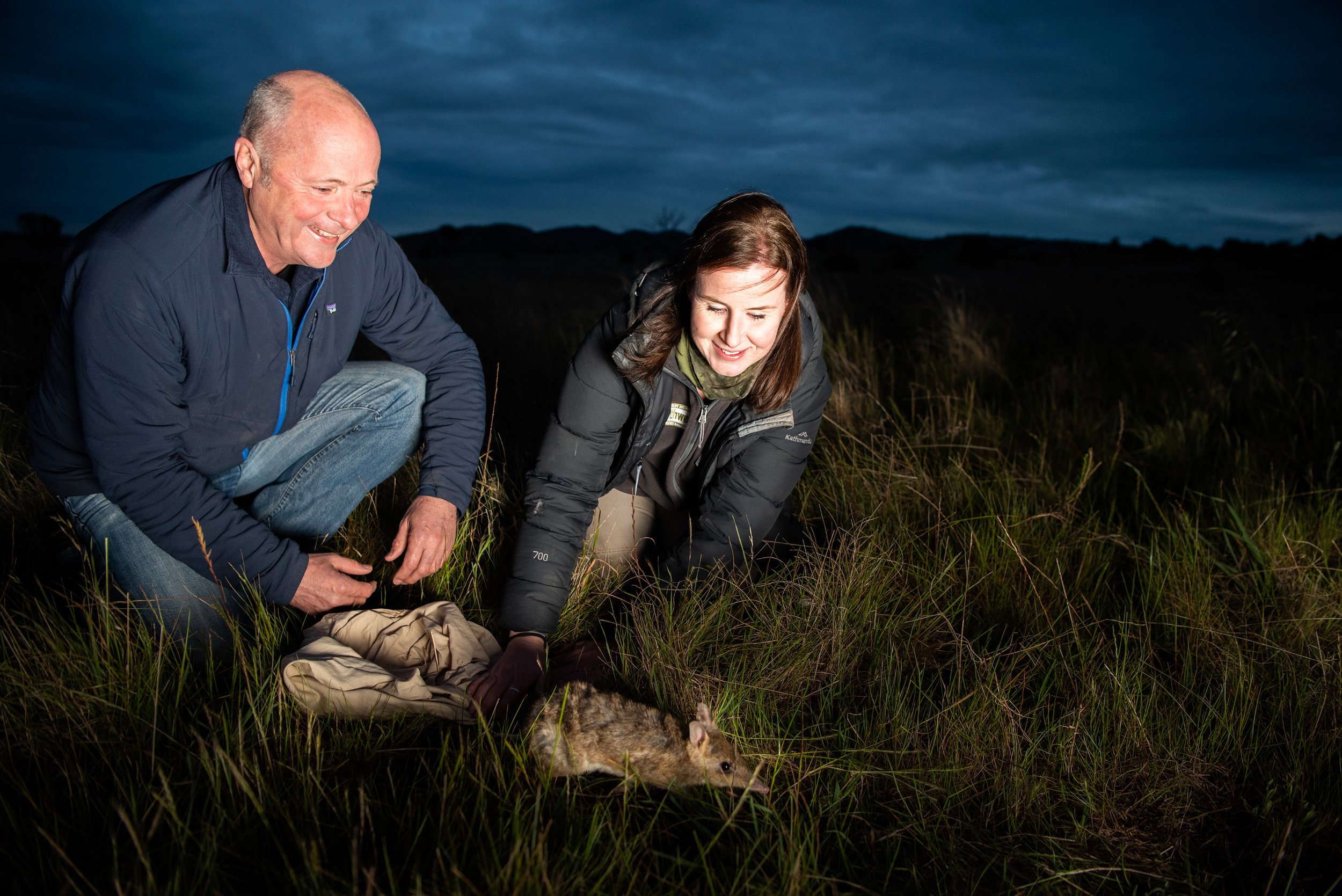
MAINLAND EASTERN BARRED BANDICOOT
The mainland eastern barred bandicoot (perameles gunni) is a small, slender marsupial with coarse yellow-brown fur and three to four light-coloured bars on its rump. It has a slaty grey belly and tail, weighing between 500–1000 grams and growing up to 35 cm in length. Its short lifespan in the wild (18–20 months) is balanced by a rapid breeding cycle, making it one of Australia’s most fascinating diggers and ecosystem engineers.
Physical description
This species has coarse yellow-brown fur with three to four light-coloured bars on its rump and a grey belly. It is slender, weighing between 500–1000 grams and reaching up to 35 cm in length. It has a short lifespan in the wild, just 18 to 20 months.
Habitat and distribution
Historically, Eastern Barred Bandicoots were widespread across Victoria’s grassy basalt plains, from Melbourne to southeastern South Australia. Today, they survive only in Tasmania and in predator-proof sanctuaries or islands on the mainland. Habitat loss due to agriculture and urbanisation has led to the loss of 99% of the native grasslands they once called home.
Behaviour and diet
Eastern barred bandicoots are solitary and nocturnal. They spend daylight hours in grass-lined nests and emerge at night to forage. Their diet includes insects, small invertebrates, and plant matter such as bulbs, tubers, and fruit. Through digging, they aerate soil, promote seed dispersal, and create micro-habitats that support biodiversity.
Breeding
Females can breed from as early as three months old. In good conditions, they may produce up to five litters a year, but breeding can cease entirely during droughts. With a gestation period of only 12.5 days, one of the shortest of any mammal, they typically give birth to two to five joeys per litter. Young are weaned by around 70–80 days and become independent at three to five months of age.
Conservation status
LC
NT
VU
EN
CR
EW
EX
Least Concern
Near Threatened
Vulnerable
Endangered (EPBC Act 1999)
Critically Endangered
Extinct in the Wild
Extinct
Threats
Habitat loss due to land clearing.
Predation by introduced species such as red foxes and feral cats.
Competition from introduced herbivores like rabbits.
Inappropriate fire regimes.
Drought, exacerbated by climate change.
The species can only thrive where foxes are absent or controlled.

Success in the field
Odonata, as a member of the Eastern Barred Bandicoot Recovery Team, has played a leading role in the recovery efforts of the Mainland Eastern Barred Bandicoot, which can be found at our Mt Rothwell and Tiverton sanctuaries.
Thought to be extinct on mainland Australia, the species was rediscovered in a rubbish tip in the Victorian town of Hamilton in the late 1980s. From that point, there has been a coordinated effort to save the species from extinction.
Odonata Foundation and its network of sanctuaries is now home to approximately 4,000 eastern barred, after successfully and remarkably re-establishing the species from just 24 individuals in 2004.
In 2021, the Mainland Eastern Barred Bandicoot’s conservation status was changed from ‘extinct in the wild’ to ‘endangered’ – just the second time in Australian history this has been achieved for a land-based mammal.
Ending extinction in Australia is not just about having cute fluffy animals to call our own. The lesser-known story is that these precious and unique bandicoots act as ecosystem engineers, each moving 3 tonnes of soil per year.
This does incredible things for soil aeration, seed dispersion water capture and flood and drought resilience. It allows dispersion of finite nutrients and increased soil fertility for food production. The Eastern Barred Bandicoot is also omnivorous and lives off a diverse range of insects, which in-turn reduces insect pressure and the risk of plagues.
The recovery of the species is integral to maintaining biodiversity, healthy soil and ecosystems in Australia.
Recovery partners
Thank you to the collective efforts of all those on the Mainland Eastern Barred Bandicoot recovery team.

